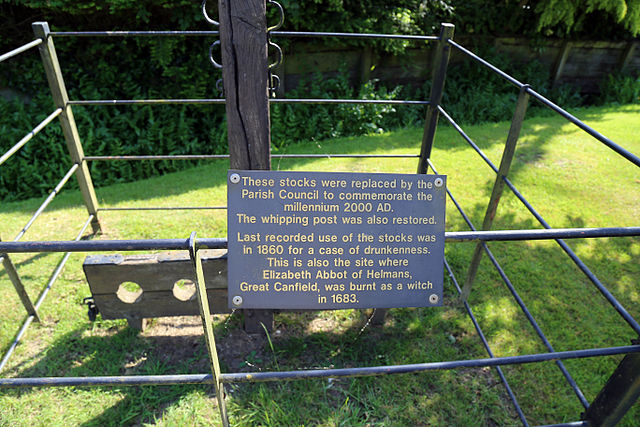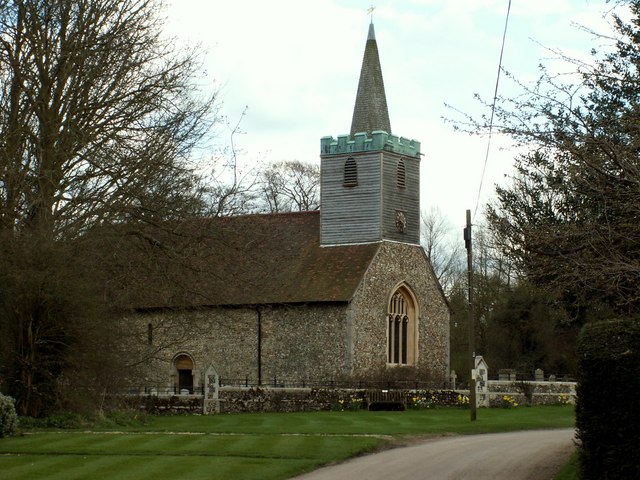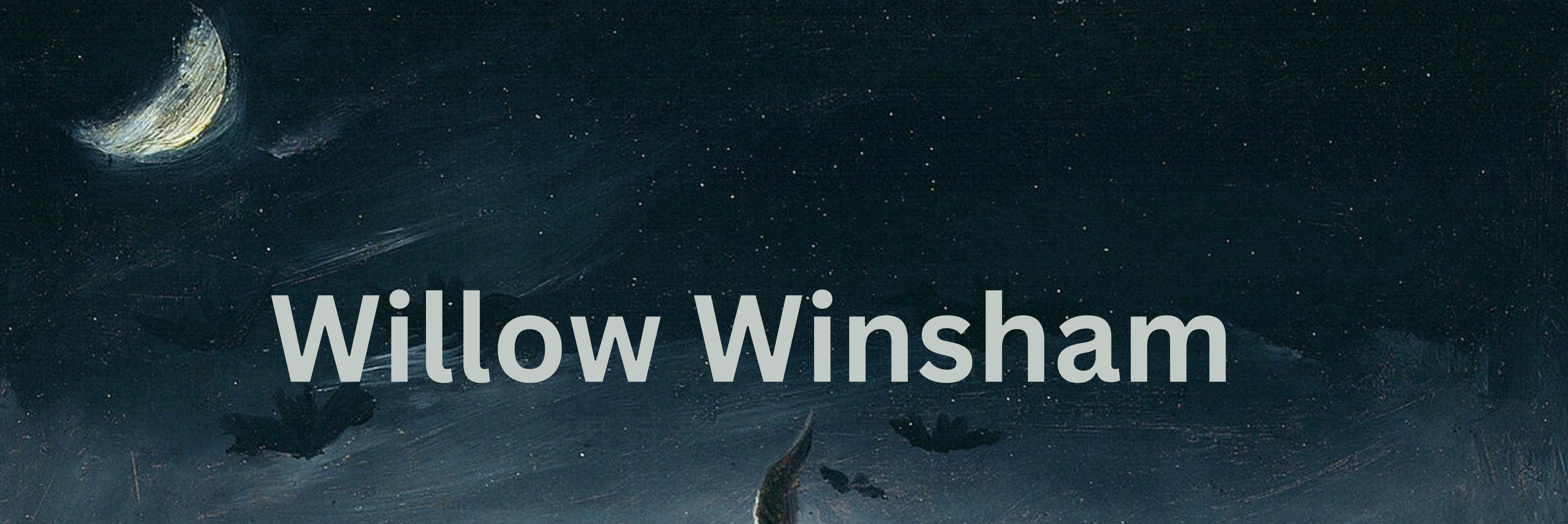Sometimes research is the most fabulous fun in the world. Other times, it leaves you tearing your hair and wondering why you ever started. This was definitely the case when I decided to look into the supposed witch burning of Elizabeth Abbot in Great Canfield, Essex.
I was looking for information on something else entirely, when I came across a photo that piqued my interest. It showed the restored stocks and whipping post at Great Canfield, Essex, and a plaque that commemorated the fact, finishing with:
“This is also the site where Elizabeth Abbot of Helmans, Great Canfield, was burnt as a witch in 1693.”

As regular readers will already know, a supposed witch burning in England is one of those things that really makes me need to find out more. The evidence for Elizabeth Abbot being executed for witchcraft is scant indeed. Convicted witches in England were hanged, not burned, and in the rare instance an accused witch was burned it was for another crime such as petty treason. She would not, therefore, have been burned as a witch. The year of her supposed execution is another red flag as it is late for an execution for witchcraft in England, a year after the last known witch hangings in England, those of the Bideford Witches.
It is extremely improbable therefore that Great Canfield’s Elizabeth Abbot was executed as a witch, but was she executed for another crime? An article listing the 92 individuals executed in Essex for various crimes over a 500 year period, including the year in question, does not include an Elizabeth Abbot in its numbers, and I have yet to find evidence of an execution for someone of that name in 1683 anywhere. (Though that does not mean it does not exist – the hunt is ongoing!)
In fact, I have struggled to discover the identity of Elizabeth Abbot at all. The Great Canfield parish registers throw up a decided lack of Abbots; there are some Pabet/Pabots, but even amongst those, no Elizabeth that would fit the dates. This could of course be due to gaps/omissions in the registers.
Where then, does the tale of Elizabeth Abbot and her grisly fate, come from?
If anyone can put me out of my misery, do let me know!
All was not entirely lost on the research front however, as Great Canfield did in fact have a resident accused of witchcraft. On 7 July 1630 at the Essex Summer Assizes, Dionisia Josselyn came before the courts under the following indictment:
Dionisia Josselyn of Great Canfield, widow, on 1 May, 1626 at Great Canfield, bewitched Joan Judd, who was wasted and consumed.
The accusation was endorsed by Joan’s mother, Katherine Judd.
Dionisia pleaded not guilty and was reprieved but was not released. She was seen again the following year on 17 March at the Lent Sessions at Brentwood. This time the indictment included the fact that her supposed victim, Joan Judd, had died the previous October, and was endorsed by several other local residents, including Joan’s mother. Despite this fact, Dionisia was again acquitted and released at some point afterwards.
The parish registers for Great Canfield confirm that a Joan Judd, daughter of Thomas and Katherine Judd, was buried 27 October 1630. According to the dates given in the indictments therefore, the young woman had been ill for four a period of four and a half years before Dionisia came before the assizes. The baptism records for Great Canfield record her birth being January 1609/10, putting her at around 20 years of age when she died.

Thomas Judd (known as The Younger) and Katherine Norwood married on 3 August 1595, just a couple of weeks after the woman who was accused of causing their daughter’s death married Robert Josselyn in the same church. The Judds had several children baptised in the parish. Katherine died in December 1632, only a short period after her daughter.
Dennis or Dionisia Thorne married Robert Josselyn in 1595. He died in 1624, two years before his widow was said to have bewitched Joan Judd. Although I could not find a birth record for Dionisia, there are records showing that Robert Thorne married his wife Marie or Mary in January 1559. The marriage was short-lived, as Mary died in 1560, and another daughter, Joan, was buried in 1561. It is possible that Robert remarried and that Dionisia was a child from that marriage.
After her release, Dionisia returned to her home and, like many accused of witchcraft, lived out her days in her own village; there is a burial record for Widow Joyslin, buried 30 March 1647.
Animosity between the two families does not appear to have been that protracted: in 1636, another Joan Judd married a William Josselyn in Great Canfield.
Credit and thanks to The Josselin Society for the lead on the marriage date of Dionisia and Robert Thorne.

Went for a walk today and saw the same sign at Hellmans Cross. I blogged on this 12 years ago. Any update on this?
Hi John, thanks for making contact! No updates on this one yet unfortunately, but who knows what the year to come might bring?
Best Wishes, Willow